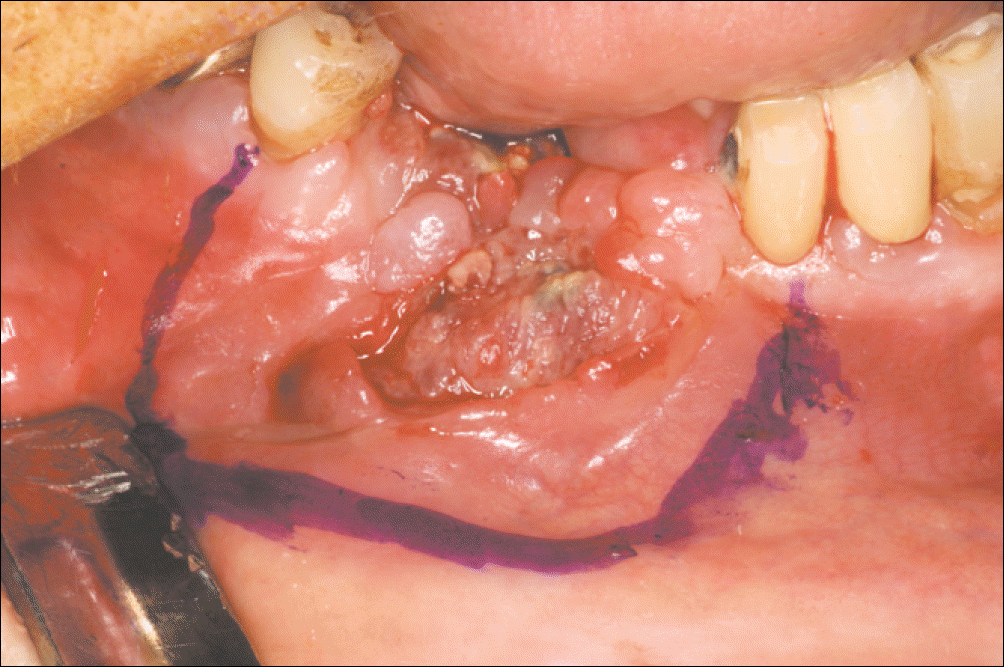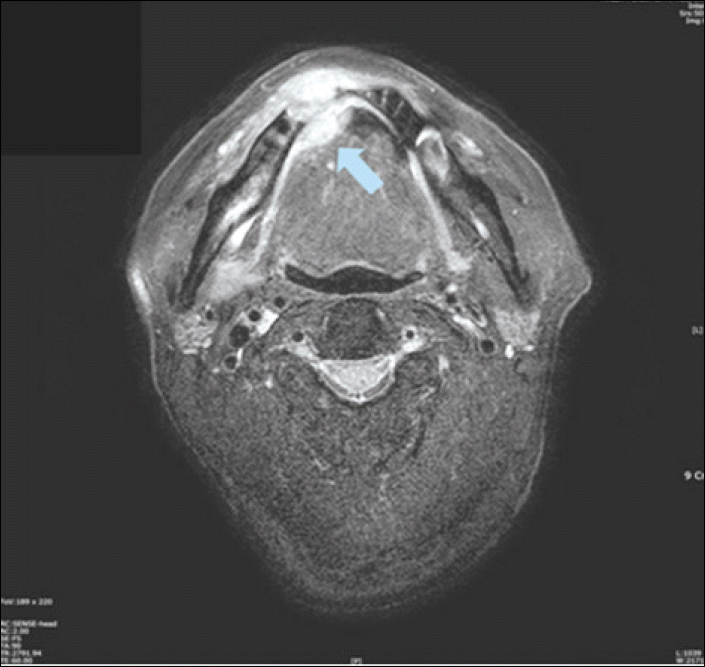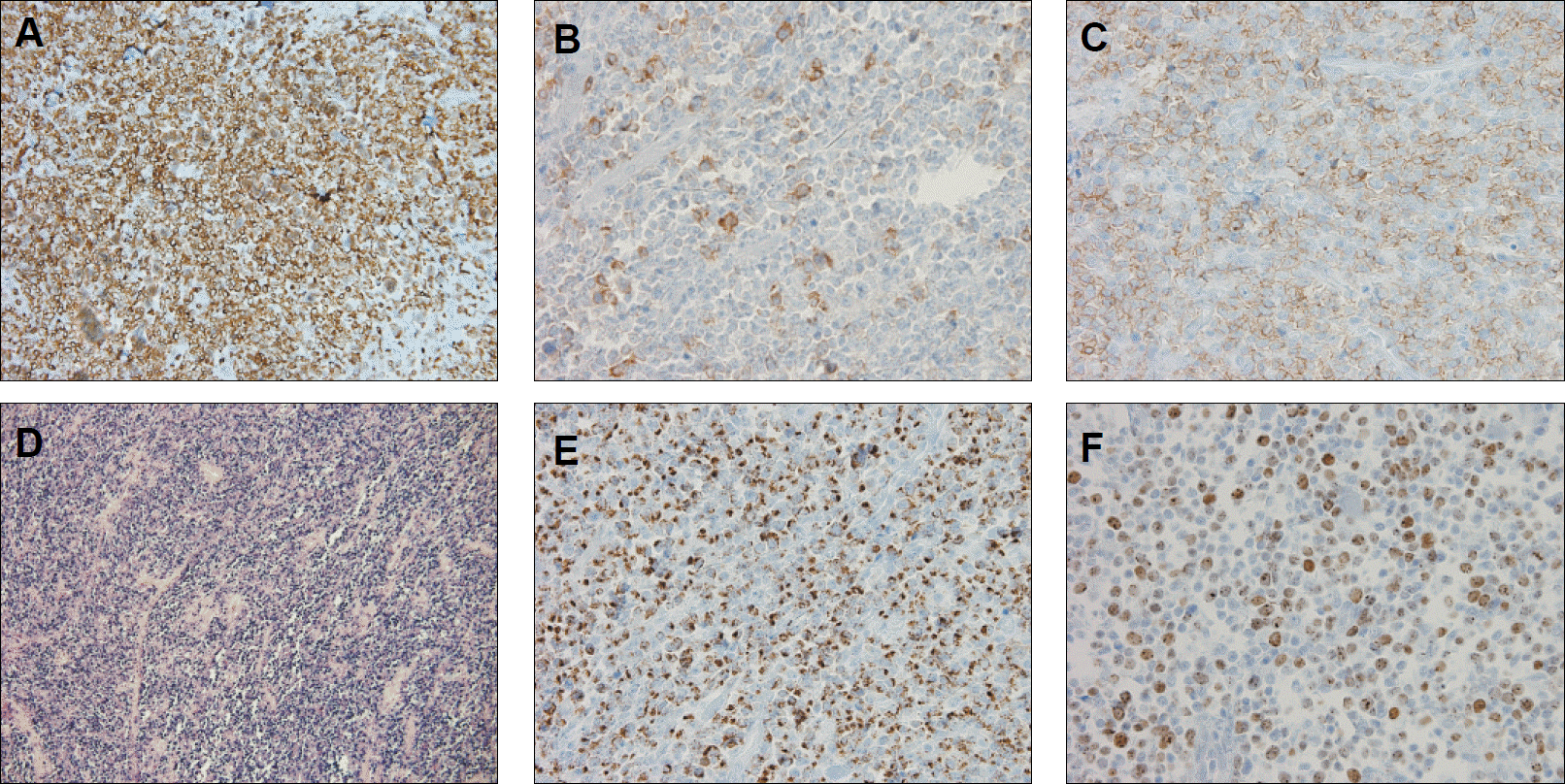Abstract
Extranodal NK/T-cell lymphoma (NTCL), nasal type is rare and highly fatal malignant neoplasm. Early diagnosis and establishing treatment plan are very difficult. Furthermore, NTCL in the mandible is an extremely rare condition. The clinical significance of presented case is the very rare location of NTCL. To the best of author’ s knowledge, this is the first reported case of NTCL of the mandible in the literature.
Go to : 
REFERENCES
1. Lee J, Suh C, Park YH, Ko YH, Bang SM, Lee JH, et al. Extranodal natural killer T-cell lymphoma, nasal-type: a prognostic model from a retrospective multicenter study. J Clin Oncol. 2006; 24:612–8.

2. Nakamura S, Suchi T, Koshikawa T, Kitoh K, Koike K, Komatsu H, et al. Clinicopathologic study of CD56 (NCAM)-positive angiocentric lymphoma occurring in sites other than the upper and lower respiratory tract. Am J Surg Pathol. 1995; 19:284–96.

3. Jaffe ES, Lipford EH, Margolick JB, Longo DL, Fauci AS. Lymphomatoid granulomatosis and angiocentric lymphoma: a spectrum of post-thymic T-cell proliferations. Semin Respir Med. 1989; 10:167–72.

4. Mroczek EC, Weisenburger DD, Grierson HL, Markin R, Purtilo DT. Fatal infectious mononucleosis and virus-associated hemo-phagocytic syndrome. Arch Pathol Lab Med. 1987; 111:530–5.
5. Pileri SA, Montanari M, Falini B, Poggi S, Sabattini E, Baglioni P, et al. Malignant lymphoma involving the mandible. Clinical, morphologic, and immunohistochemical study of 17 cases. Am J Surg Pathol. 1990; 14:652–9.
6. Mafune KI, Tanaka Y, Suda Y, Izumo T. Outcome of patients with non-Hodgkin’ s lymphoma of the stomach after gastrectomy: clinicopathologic study and reclassification according to the revised European-American lymphoma classification. Gastric Cancer. 2001; 4:137–43.
7. Harris NL, Jaffe ES, Stein H, Banks PM, Chan JK, Cleary ML, et al. A revised European-American classification of lymphoid neoplasms: a proposal from the International Lymphoma Study Group. Blood. 1994; 84:1361–92.
8. Chorianopoulos D, Samitas K, Vittorakis S, Kiriazi V, Rondoyianni D, Tsaousis G, et al. Extranodal natural killer/T-cell lymphoma, nasal-type. Skinmed. 2010; 8:56–8.
10. Oshimi K. Progress in understanding and managing natural killer-cell malignancies. Br J Haematol. 2007; 139:532–44.

11. Au WY, Pang A, Choy C, Chim CS, Kwong YL. Quantification of circulating Epstein-Barr virus (EBV) DNA in the diagnosis and monitoring of natural killer cell and EBV-positive lymphomas in immunocompetent patients. Blood. 2004; 104:243–9.

12. Au WY, Weisenburger DD, Intragumtornchai T, Nakamura S, Kim WS, Sng I, et al. Clinical differences between nasal and ex-tranasal natural killer/T-cell lymphoma: a study of 136 cases from the International Peripheral T-Cell Lymphoma Project. Blood. 2009; 113:3931–7.

13. Wong KF, Chan JK, Ng CS, Lee KC, Tsang WY, Cheung MM. CD56 (NKH1)-positive hematolymphoid malignancies: an aggressive neoplasm featuring frequent cutaneous/mucosal involvement, cytoplasmic azurophilic granules, and angiocentricity. Hum Pathol. 1992; 23:798–804.

14. Sakata K, Hareyama M, Ohuchi A, Sido M, Nagakura H, Morita K, et al. Treatment of lethal midline granuloma type nasal T-cell lymphoma. Acta Oncol. 1997; 36:307–11.

15. Kim GE, Lee SW, Chang SK, Park HC, Pyo HR, Kim JH, et al. Combined chemotherapy and radiation versus radiation alone in the management of localized angiocentric lymphoma of the head and neck. Radiother Oncol. 2001; 61:261–9.

16. Kim GE, Cho JH, Yang WI, Chung EJ, Suh CO, Park KR, et al. Angiocentric lymphoma of the head and neck: patterns of systemic failure after radiation treatment. J Clin Oncol. 2000; 18:54–63.
17. Lee KW, Yun T, Kim DW, Im SA, Kim TY, Yoon SS, et al. First-line ifosfamide, methotrexate, etoposide, and prednisolone chemotherapy +/- radiotherapy in active stage I/II extranodal NK/T-cell lymphoma. Leuk Lymphoma. 2006; 47:1274–82.
18. Yamaguchi M, Suzuki R, Kwong YL, Kim WS, Hasegawa Y, Izutsu K, et al. Phase I study of dexamethasone, methotrexate, ifosfamide, L-asparaginase, and etoposide (SMILE) chemotherapy for advanced-stage, relapsed or refractory extranodal natural killer (NK)/T-cell lymphoma and leukemia. Cancer Sci. 2008; 99:1016–20.

Go to : 
 | Fig. 1.Intraoral presentation of the lesion. The presented line showed a planned resection margin. |
 | Fig. 2.Magnetic resonance imaging of the lesion showed highly enhanced lesion in the mandible.(arrow) |
 | Fig. 3.The findings of immunohistochemistry and in situ hybridization. A. CD 3.(immunohistochemical staining, original magnification ×200), B. CD 30.(immunohistochemical staining, original magnification ×400), C. CD 56.(immunohistochemical staining, original magnification ×400), D. In situ hybridization for Epstein-Barr virus.(original magnification ×100), E. Granzyme B.(immunohistochemical staining, original magnification ×400), F. Ki67.(immunohistochemical staining, original magnification ×400) |




 PDF
PDF ePub
ePub Citation
Citation Print
Print


 XML Download
XML Download